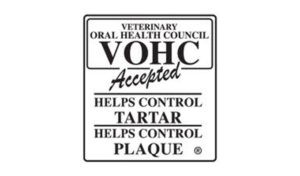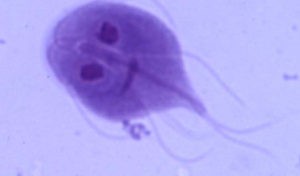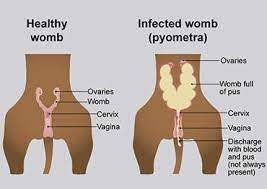 Going Home
Going Home
The first day with your new puppy will involve traveling, whether it’s a short distance from the shelter or a local breeder or a long ride in a car or the cabin of a plane. This is the perfect opportunity to start teaching your puppy to love his crate. Be sure it’s well stocked with treats and, if possible, a towel or T-shirt that bears the scent of his mother and littermates. That will go a long way toward making him comfortable in his new surroundings.
When you arrive, make sure he potties before you bring him indoors. Praise him and give him a treat when he does. Keep him on leash inside — free run of the house is still far in his future.
Sit on the floor with him or on the sofa, if you plan to allow him on the furniture. Love on him and talk to him, so he gets to know the sound of your voice and touch of your hand. This is a great time to start teaching him that it’s OK for you to touch his paws, look inside or sniff his ears, rub his belly, touch his tail and groom him with a soft brush.
Remember that puppies don’t have good bladder or sphincter control yet, and excitement can make them need to pee or poop. Take your puppy out to potty after 15 to 20 minutes of play, as well as after every meal. A potty run should be the first thing you do with him in the morning and the last thing you do with him at night.
Let your puppy spend a short amount of time in his crate. This is a big day for him, and he needs some time to himself, so he can process his new situation. It’s okay to have the crate in the living room or some other area in the home where people are coming and going, but don’t bug him while he’s in there. Unless he needs to go potty, walk away calmly if he starts to whine or bark. Don’t let him out until he’s being quiet.
You’ll want to get your pup to the veterinarian within 48 hours of bringing him home. That’s important to make sure he’s in good health.
The first visit can be strictly for a physical exam and weigh-in. It’s a good opportunity for your pup to meet some nice new people, get handled by them and get some yummy treats. Depending on when his last set of vaccinations took place, you can then schedule the next round of vaccinations.
Eating, Sleeping and Playing
Feeding your puppy does more than help him grow — it’s a way of bonding, and it gets him on a schedule that makes it easier for you to house-train him. Start with the food the breeder or shelter has been giving him. If you want to change it, gradually mix in the new food over a week to 10 days to limit tummy upset.
We don’t recommend free-feeding dogs — leaving food down all the time — at any point in their lives. A regular mealtime gives your dog something to look forward to, helps prevent obesity and ensures that you know if he is starting to eat less or becoming ravenous, both of which can indicate health problems. Consider hand-feeding your puppy for at least the first week he is with you. Just as you would if you were feeding him from a bowl, measure his food, so you don’t give too much. Give him pieces of kibble from your hand as long as he is sitting still or looking at you. Don’t reward him for jumping up, barking or doing anything else you don’t like. Feed him in different areas of the house.
If you walk away with the bowl and he follows you, give him some more. Sit in a chair or stand in the kitchen. Pretty soon, you can start asking him to do things, such as sit, down or spin for kibble rewards. This shouldn’t take more than a few minutes per meal, and any family member can do it.
The longer you hand-feed, the better. This will help your puppy to develop a soft mouth, so he doesn’t nip or bite when he takes things from your hands. It teaches trust and self-control. It helps him learn not to wolf down his food. And it creates a dog who will likely be crazy easy to train, because he will be so focused on you.
Your puppy’s socialization continues through the night — even though you’re both asleep. You may plan to let your pup sleep on the bed, but right now he’s still too young to be allowed that privilege. When it’s bedtime, take him out for one last pee and then matter-of-factly put him in his crate with a treat and his towel that smells like Mom. Don’t respond to whining or barking. Tell him good night and go to bed yourself. He’ll soon settle down, and your scent and the sound of your breathing will help to calm him.
Depending on his age, he might not be able to last through the night without another potty outing. If you hear whining or scratching at the crate door late at night, hustle him outdoors, so he can do his business, and then bring him right back in to his crate. You don’t want him to get the idea that you’ll play with him in the middle of the night.
You most likely bought a few toys before bringing your new pup home. Now that you’ve observed him for a couple of days, you probably have a better idea of how he likes to play and what types of toys intrigue him. If he’s a big pup who likes to chew, make sure his toys are tough. They shouldn’t have any pieces that he can chew off and swallow or any stuffing that can come out if he rips the toy apart.
Some pups are gobblers. They rapidly bite off and swallow pieces of rawhide or anything else they can chew up. Avoid giving them anything like that and stick to large, tough rubber items, such as balls that they can’t take a bite out of.
Learning Starts Early
Depending on where you got him, his breed and his individual breeder, your pup is anywhere from 7 to 12 weeks old. That’s right during his critical learning period, when he is soaking up all kinds of information about the world around him and how he should behave in it.
This critical period lasts until he is 14 to 16 weeks old, so you may have as little as a couple of weeks to make the absolute most of this rapid learning stage. Of course, he’ll still learn afterward, but the things you teach during this time — good and bad — will really stick in his memory, so make sure it’s the right stuff. The goal is for him to have lots of positive experiences with friendly people, dogs and cats.
Meeting the neighbors, learning the sounds in your home and neighborhood, and going to the veterinarian for the first time are all part of your puppy’s socialization process. Once he’s been with you for a week, it’s time to turbocharge his introduction to the world.
During his critical learning period, your puppy should meet at least 100 different people, not just the same 10 people over and over again. To get the numbers up, introduce him to the people delivering mail and packages and the gardeners in your neighborhood. Take him for short car rides and on errands, where you can take him into local businesses, such as the dry cleaners, a private postal service or an open-air shopping mall. (Be sure he potties outside immediately before you take him onto the premises, so he’s always welcome back.) If it’s a place where other dogs might go, carry him in a puppy sling or backpack or put him in a cart and don’t expose him to other dogs until we tell you he’s had enough vaccinations. Take treats for strangers to give him.
Meeting new people and having lots of different experiences is important, because it gives a puppy broad experience to draw on later in life. A puppy who has met only middle-aged people or only your friends or neighbors doesn’t cope as well when he meets other types of people, such as young children, people wearing uniforms, people in wheelchairs or people from other cultures.
A little adversity during this time is good for your pup’s adventurous soul. Moderate amounts of stress during the socialization period can prepare a puppy to be ready for anything. Give him a change of elevation by putting him on top of a picnic table or clothes dryer, or surprise him with a toy while playing peekaboo. These simple things can help him become unflappable as he matures.
Time for School
The first two to three weeks after you bring him into your house is a great time to start training him at home. You’re teaching him how to learn and developing a relationship with him at the same time — a real win-win! It’s easy to teach tricks, such as sit, down, come, high-five, roll over and more. You should also start to work with him on important commands like “drop it” and “give it,” which not only improve his manners but can help to keep him safe.
Start looking for a good puppy kindergarten class as soon as you take your pup home. By the time he has typically had two sets of vaccinations — usually by 10 to 12 weeks of age — he’s ready to start school.
Puppy kindergarten classes offer socialization opportunities with other pups and people. The trainer can help you learn to teach your dog throughout his life. If you’re smart, you’ll never let learning end for your dog. Learning new things keeps his mind and body active and helps to keep him out of trouble.
Here are six things your puppy should be learning:
•No teeth on people — ever!
•No jumping up on people.
•Always potty outside (don’t give him any chances to make a mistake).
•Meeting people is great!
•Going to the vet is fun!




